Hey, if your plants are growing slower than you’d like, don’t worry, we can fix that. Let’s start with sunlight—most plants need 6-8 hours of bright, indirect light daily to thrive. Check their spot; if it’s too shady, move them closer to a window by a few feet. Stick around, ‘cause there’s more to uncover about boosting their growth!
Contents
Insufficient Sunlight Exposure
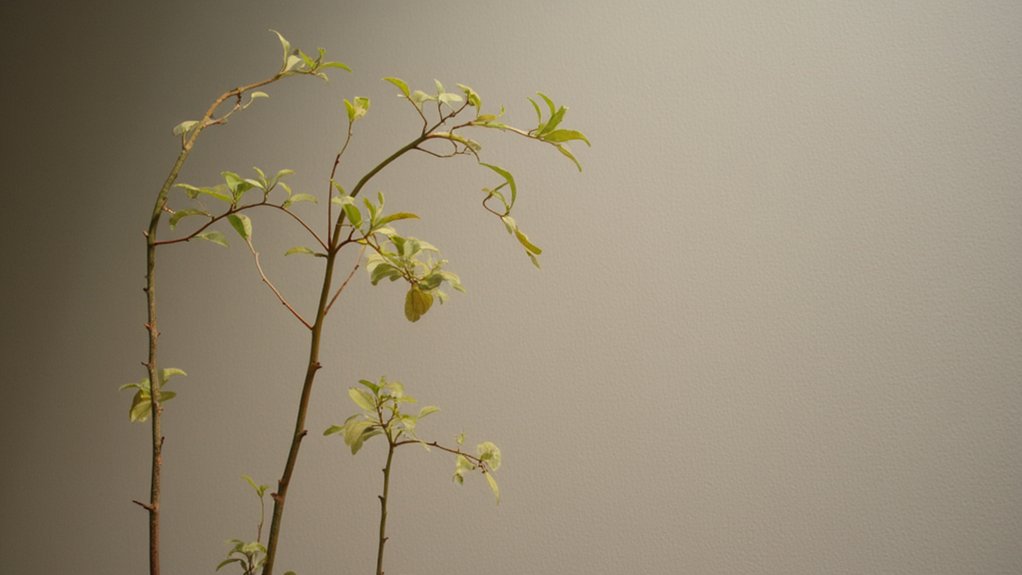
Even though plants seem tough, insufficient sunlight exposure can really stunt their growth, and I’m guessing you’ve noticed this. If your plants look leggy or pale, they’re likely begging for more light. Let’s fix that fast.
First, check how much sun they’re getting daily. Most indoor plants need 6-8 hours of bright, indirect light, while outdoor ones often crave full sun. If your space lacks natural light, grab a grow light—set it 12-18 inches above the plants, and run it for 12-14 hours daily.
Also, rotate your pots every few days, ensuring all sides get even exposure. Don’t let shady spots slow you down. Stick to this plan, and you’ll see stronger, healthier growth within 2-3 weeks, no kidding.
Poor Soil Quality
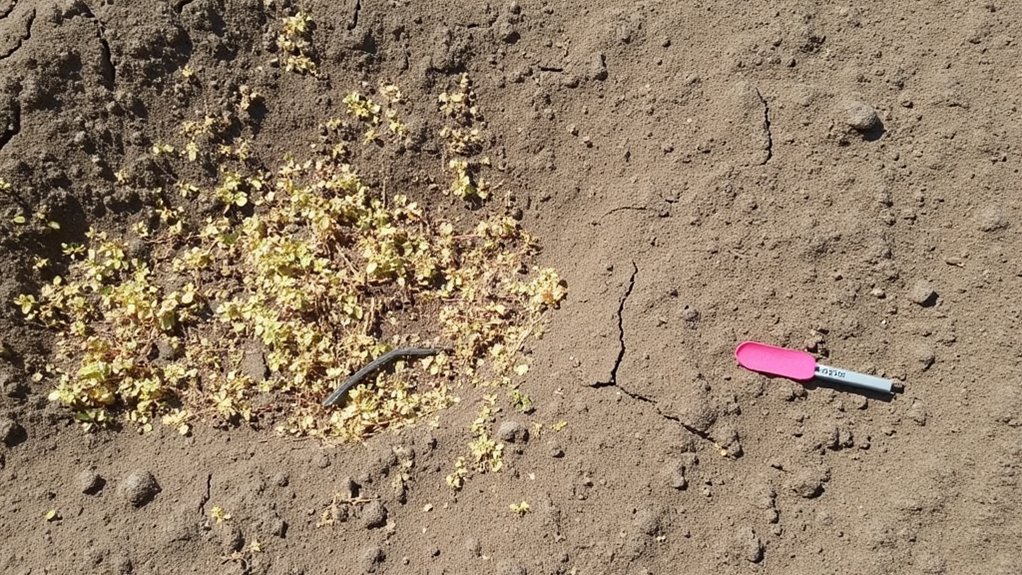
While sunlight’s critical, let’s not ignore another sneaky culprit: poor soil quality. You’ve gotta check if your soil’s giving plants what they need, or they’ll just stall. Poor soil often lacks nutrients like nitrogen, phosphorus, or potassium, stunting growth fast.
Start by testing your soil with a simple kit from any garden store. Look for pH levels between 6.0 and 7.0, ideal for most plants. If it’s off, or nutrients are low, don’t worry, you can fix it.
Add organic compost, about 2-3 inches mixed into the top 6 inches of soil, to boost fertility. Or, use a balanced fertilizer, like a 10-10-10 mix, applying 1 pound per 100 square feet every 4-6 weeks. Keep at it, and you’ll see results soon!
Inadequate Watering Practices
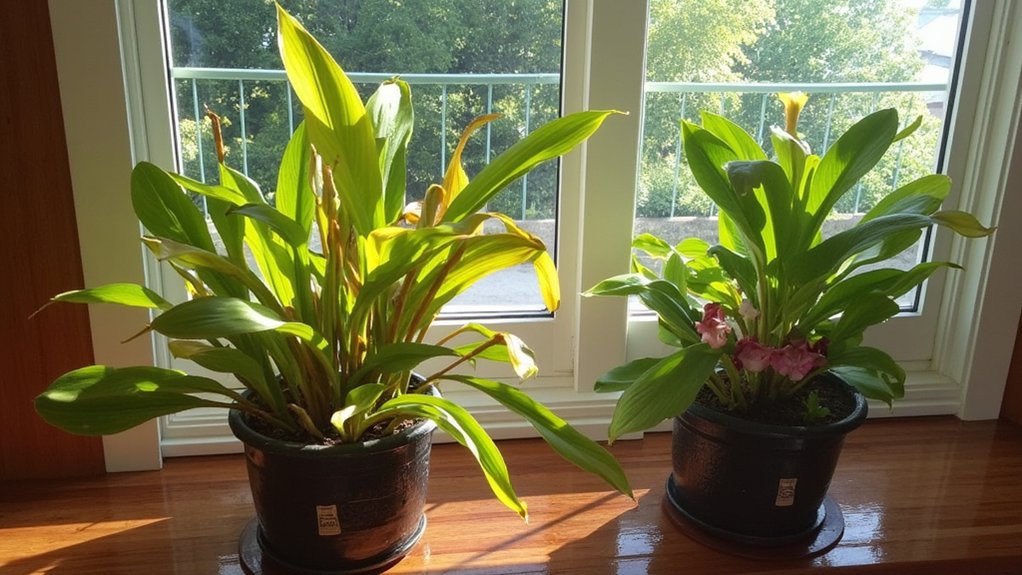
Three key factors often mess with plant growth, and watering is a big one. You’ve gotta get it right, or your plants will struggle. Too much water, and roots drown; too little, and they dry out fast.
Check your soil before you water, okay? Stick your finger in about an inch deep—if it’s dry, grab that watering can. Most houseplants need a thorough soak every 7-10 days, but don’t let them sit in soggy trays. Empty excess water after 30 minutes to avoid root rot.
Also, watch the time of day. Water early in the morning, so leaves dry before nightfall, preventing mold. Adjust based on seasons too—less in winter, more in summer. Get this down, and you’ll see faster growth!
Nutrient Deficiency Issues
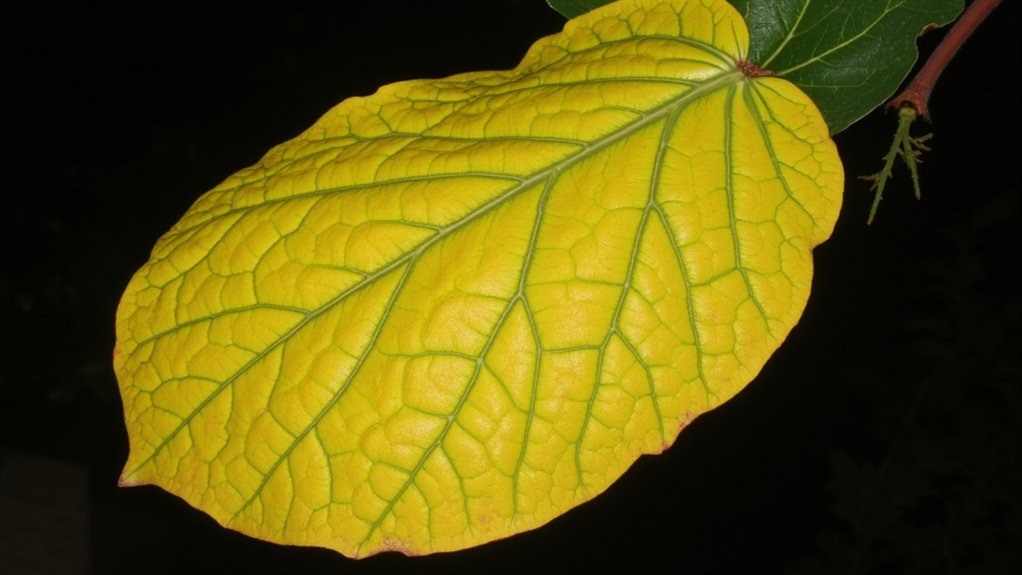
Hey, now that we’ve tackled watering, let’s zero in on another growth blocker: nutrient deficiency. If your plants look pale or stunted, they’re likely missing key nutrients. Nitrogen, phosphorus, and potassium are essential, and without them, growth slows.
Check your plant’s leaves for clues, like yellowing edges signaling low nitrogen. You can fix this by using a balanced fertilizer, such as a 10-10-10 mix, applied every 4-6 weeks. Dissolve 1 tablespoon in a gallon of water, then pour it at the base.
Don’t overdo it, though; too much can burn roots. Stick to the label’s instructions, and watch for improvement within 7-10 days. If issues persist, test your soil’s nutrient levels with a kit from a garden store.
Pest Infestation Problems
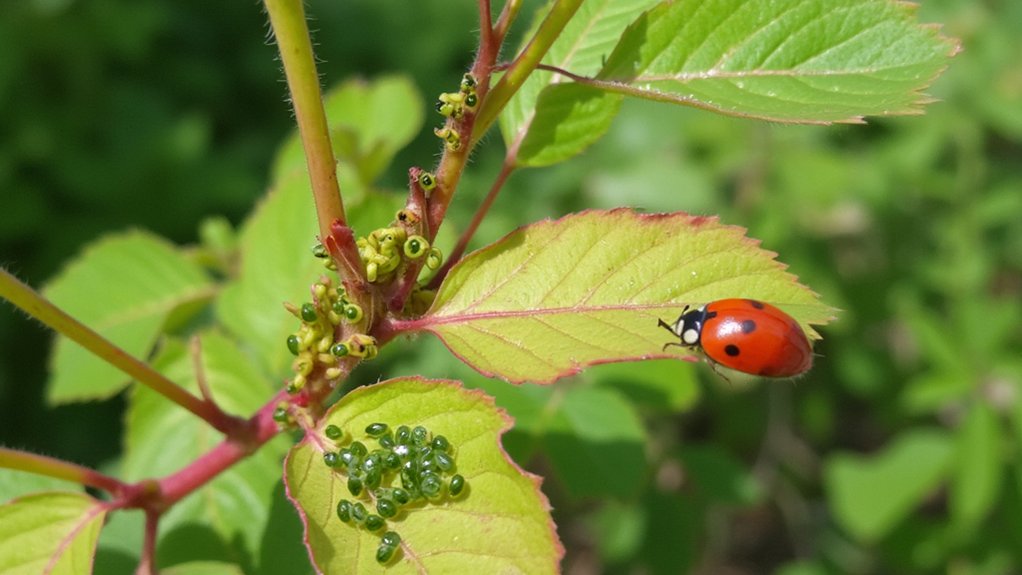
As we shift gears, let’s tackle another sneaky culprit behind slow plant growth: pest infestations. You’ve likely spotted tiny bugs, chewed leaves, or sticky residue on your plants. These are clear signs pests like aphids, spider mites, or whiteflies are feasting.
Start by inspecting your plants daily, especially under leaves where pests hide. If you see any, mix a solution of 1 teaspoon dish soap with 1 quart of water, and spray it directly on affected areas. Wait 15 minutes, then rinse with a gentle hose stream. Repeat every 3 days until pests disappear.
Don’t let these tiny invaders win! Introduce beneficial insects like ladybugs, which eat aphids, or use sticky traps near plants. Check weekly to keep infestations under control.
Temperature Fluctuations
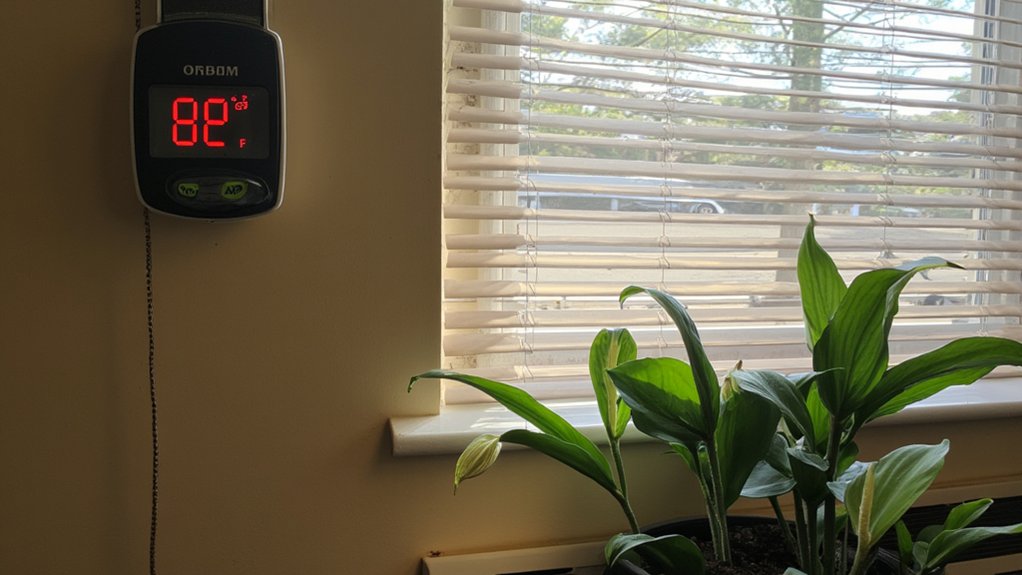
While pests can wreak havoc, temperature fluctuations might also be stunting your plants’ growth. You’ve gotta keep an eye on those temps, since sudden swings can stress your greenery. Plants thrive best in a stable range, usually between 65-75°F for most indoor varieties.
If it’s too hot, above 80°F, your plants might wilt or stop growing. Too cold, below 55°F, and they’ll struggle to photosynthesize properly. Check your space daily with a thermometer, ideally morning and night, to catch any wild shifts. Adjust by moving plants away from drafty windows or hot vents.
Don’t let temps play tricks on you. Use a small heater or fan if needed, and keep that environment steady for faster growth.
Overcrowded Plant Spacing
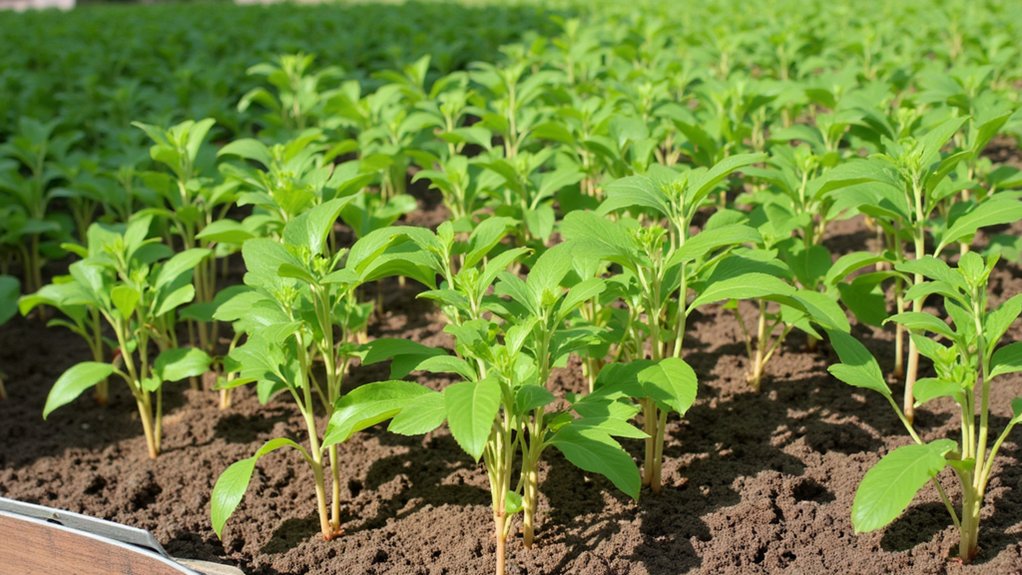
Beyond temperature swings, overcrowded plant spacing can seriously slow down your plants’ growth. When you pack too many plants into a small area, they’re fighting for light, water, and nutrients. It’s a silent battle, and nobody wins.
Check your garden or indoor setup for spacing issues. If your plants are closer than 6-12 inches apart, depending on their type, you’ve got a problem. Overcrowding stunts growth, invites pests, and can even cause root tangles underground.
Fix this by thinning out your plants now. Gently dig up extras, spacing them at least 8 inches apart for smaller varieties, or 18 inches for larger ones like tomatoes. Replant or share with friends. You’ll see healthier, faster growth within two weeks, guaranteed.
Improper Pot Size
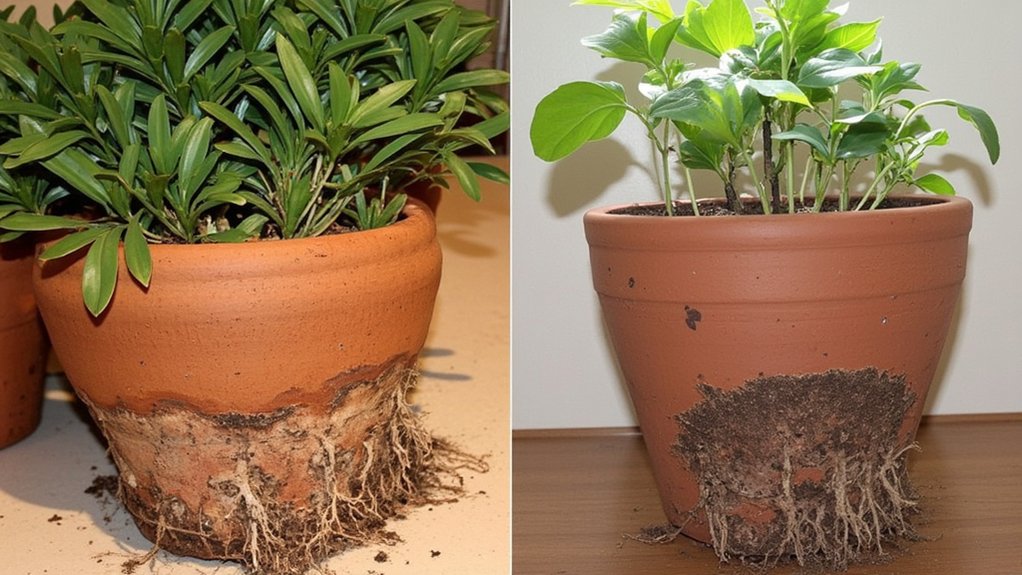
Hey, let’s talk about improper pot size, another sneaky reason your plants might be growing slowly. If your pot’s too small, roots get cramped, stunting growth. Check if roots are circling the bottom; that’s a clear sign they’re out of space.
Opt for a pot 1-2 inches wider than the current one when repotting. This gives roots room to spread without drowning in excess soil, which can hold too much water. Do this every 1-2 years, or sooner if you spot slow growth.
On the flip side, don’t go too big. A massive pot can lead to overwatering, as soil stays soggy longer. Stick to a gradual size increase, and watch your plant thrive with the right fit.
Incorrect Pruning Techniques
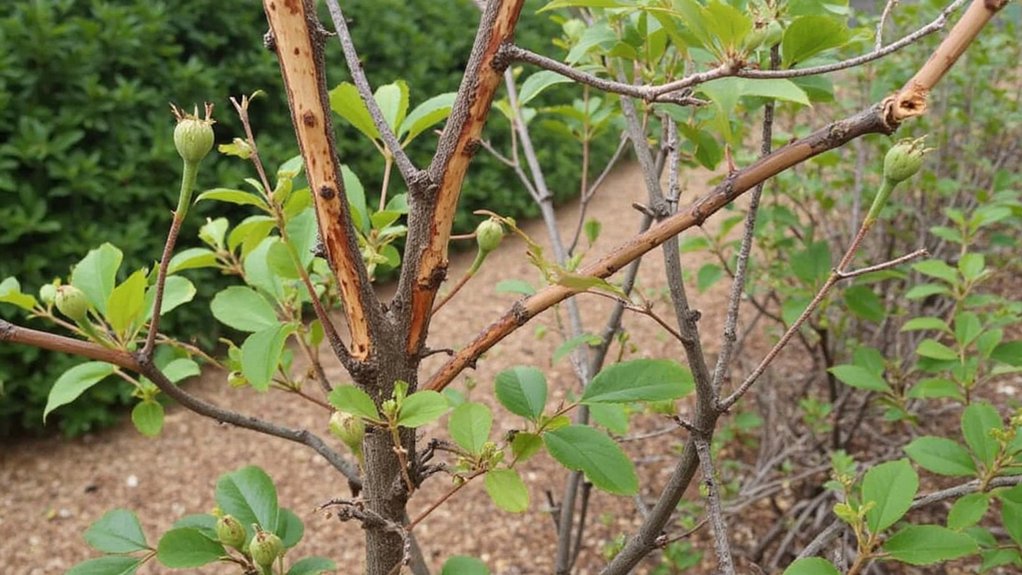
As we plunge into incorrect pruning techniques, let’s unpack how this can slow your plant’s growth. You might think snipping here and there helps, but wrong cuts can stress your plants, stunting them.
First, don’t just hack away with dull shears. Use sharp, clean tools, and cut at a 45-degree angle, about ¼ inch above a leaf node, to encourage new growth. Messy cuts, or trimming too much at once—say, over 30% of the plant—can shock it, slowing recovery for weeks.
Also, timing matters, so avoid pruning during active growth phases like spring for most species. Check your plant type, then prune in dormancy, usually late winter. This prevents energy loss, ensuring quicker, healthier regrowth for your green buddies.
Genetic Growth Limitations
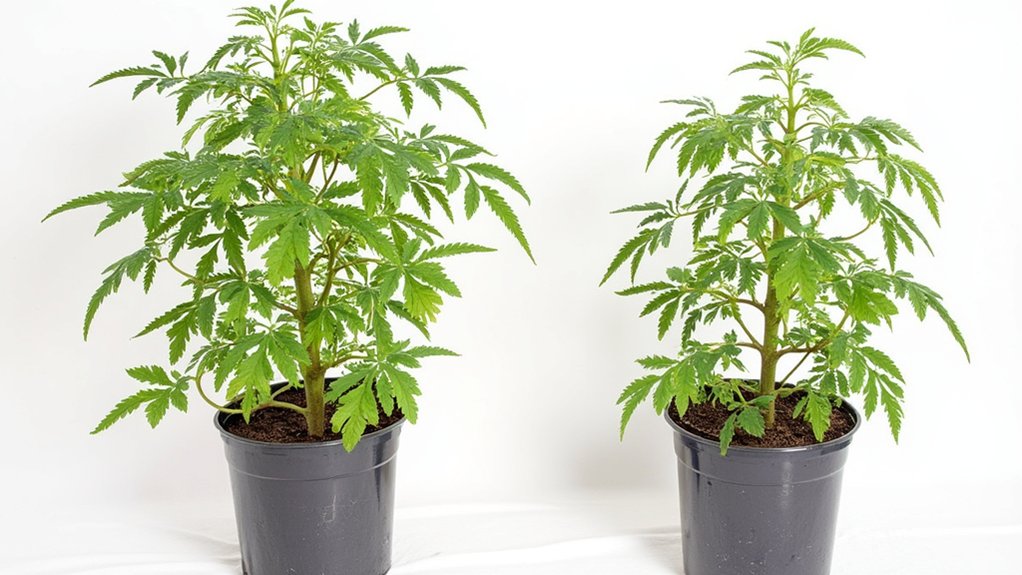
Let’s shift gears from pruning mishaps to something you can’t quite control: genetic growth limitations. You’ve got to understand, every plant has a built-in growth blueprint. Some species, like certain dwarf varieties, max out at 12 inches tall, no matter what you do.
Others, such as heirloom tomatoes, might take 80-100 days to fruit, even with perfect care. You can’t rush their DNA, but you can pick wisely. Research growth rates and mature sizes before buying—check seed packets or nursery tags for specifics like “matures in 60 days.” Match plants to your patience level and space.
If you’re stuck with slow-growers, don’t fret too much. Optimize light, water, and nutrients to hit their genetic peak, and just wait it out.
